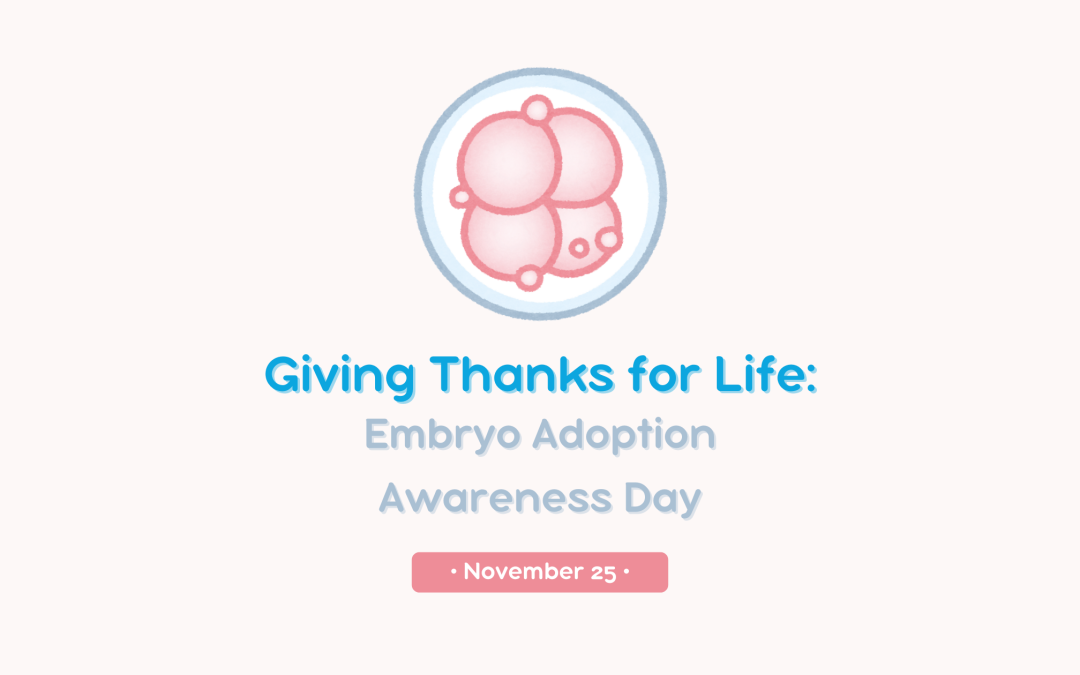This Thanksgiving season, many of us pause to reflect on what we are most thankful for—family, love, and the gift of life. For some, those blessings come through a path less traveled: embryo adoption and donation.
November 25th is Embryo Adoption Awareness Day. It is a day dedicated to sharing hope and providing families with knowledge of their options when it comes to family building through embryo adoption or donation.
What is embryo adoption and donation?
Embryo adoption and donation is a form of third-party reproduction in which unused embryos, remaining from one family’s in vitro fertilization (IVF) treatment, are donated to another family. Today, there are more than one million embryos in frozen storage in the United States. Many remain in limbo—either unclaimed, abandoned, or awaiting a decision.
When a family chooses to donate their remaining embryos, they are offering another couple the chance to experience pregnancy and childbirth. For the recipient family, the child who is born is, by definition, an adopted child.
Why would a family choose to donate or adopt embryos?
Families may choose to donate embryos if:
- They are no longer planning to use their embryos, but don’t feel at peace discarding them or donating them to science.
- They want to give their embryos a chance at life.
- They wish to help another family know the joy of pregnancy and parenthood.
Families may choose to adopt embryos if:
- They are experiencing infertility.
- They are at risk of passing on a genetic disorder to their biological children.
- They have faced repeated failed fertility treatments or miscarriages.
- They are looking for an alternative to IVF or donor eggs.
Where can embryos be donated or adopted?
1. Through an adoption agency or embryo adoption program
These programs take a child-centered approach. They screen recipient families, provide adoption education, and often allow placing families to choose the adoptive family. Legal processes, logistics, and even opportunities for open communication are guided by the program.
2. Through a fertility clinic donation program
Donation programs connected to fertility clinics typically match patients anonymously. The clinic determines which family will receive the embryos and sometimes divides a set of embryos among multiple recipients. Families donating this way usually have little say in where their embryos go.
3. Through self-matching (DIY donation)
Some families find each other directly—through personal connections, online groups, or matching databases. In this case, the families themselves are responsible for legal contracts, paperwork, and transporting the embryos between clinics.
This Thanksgiving, if your family has been blessed through embryo adoption or donation, take a moment to reflect on the gift you’ve been given—or the gift you’ve given.
Embryo adoption is more than just another path to parenthood. It’s a story of life, hope, and gratitude—one that connects two families forever. To learn more about embryo adoption and donation, visit EmbryoAdoption.org


Recent Comments